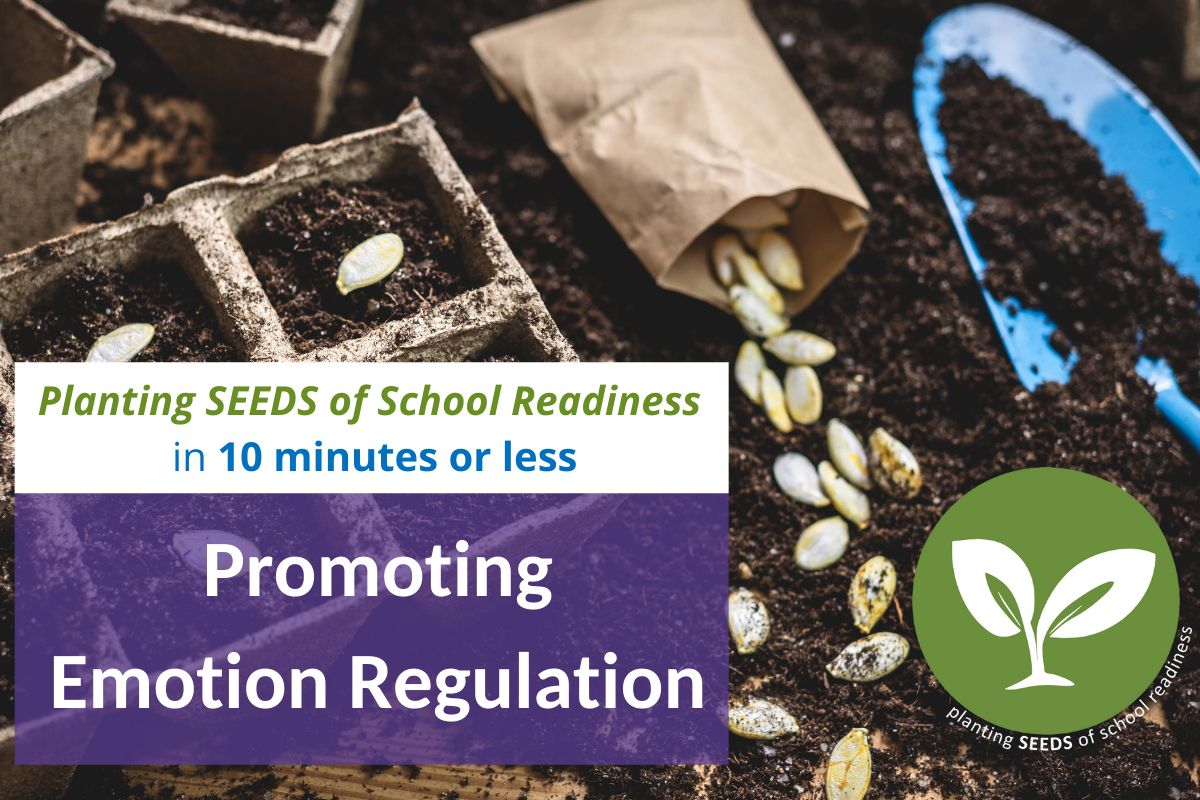Promoting Young Children's Emotion Regulation Skills In Cool Moments
Children need help building their self-regulation skills in order to be successful in the classroom, whether they are in preschool, kindergarten, elementary school, or beyond!
They need us, the nurturing adults in their lives, to help them learn how to manage their behaviors, their feelings, and their thinking processes. Sometimes we can teach them these skills directly, and sometimes we can model these skills for them.
Kids learn their school readiness skills from adults – Prepare with SEEDS for kids to learn their skills with you!
Use Observation and Narration to Promote Emotion Regulation
In our previous episode, we talked about the foundational skills that we adults can use called intentional observation and narration. These skills are so helpful and we can use them to support many of our school readiness goals for young children.
One school readiness skill that we want to support children to develop is emotion regulation. We can use observation and narration to help children learn about emotions and how to manage or “regulate” their feelings in healthy ways.
Take a look at this video to learn about how to sprinkle the language of emotions into our everyday interactions with young children.
See it! Describe it!
Looking for emotions and talking about feelings may seem a bit foreign (or even a bit silly), but it’s actually a very powerful experience for young children to hear us giving an external voice to the internal experiences that we all have.
Remember, our narrations help children develop their own ability to self-narrate. They will use that voice inside their own head as they grow to make sense of and regulate their feelings.
Let’s take a closer look!
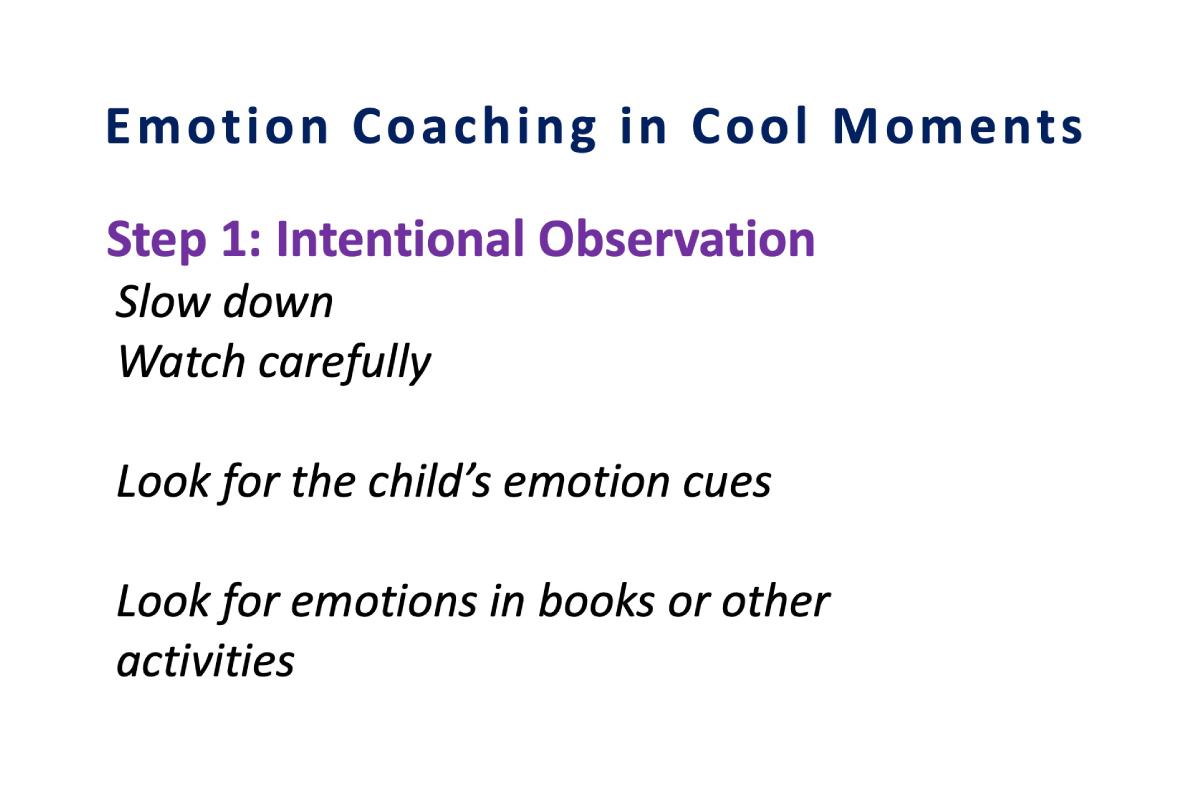
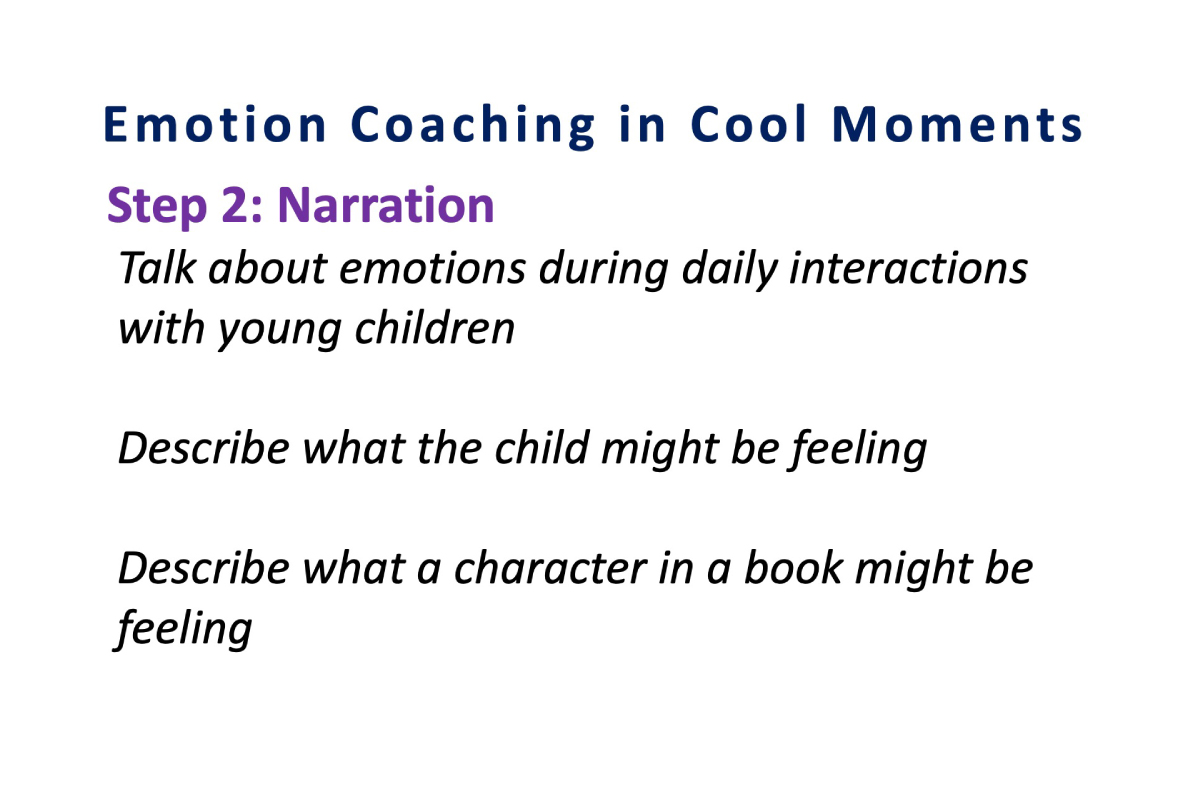
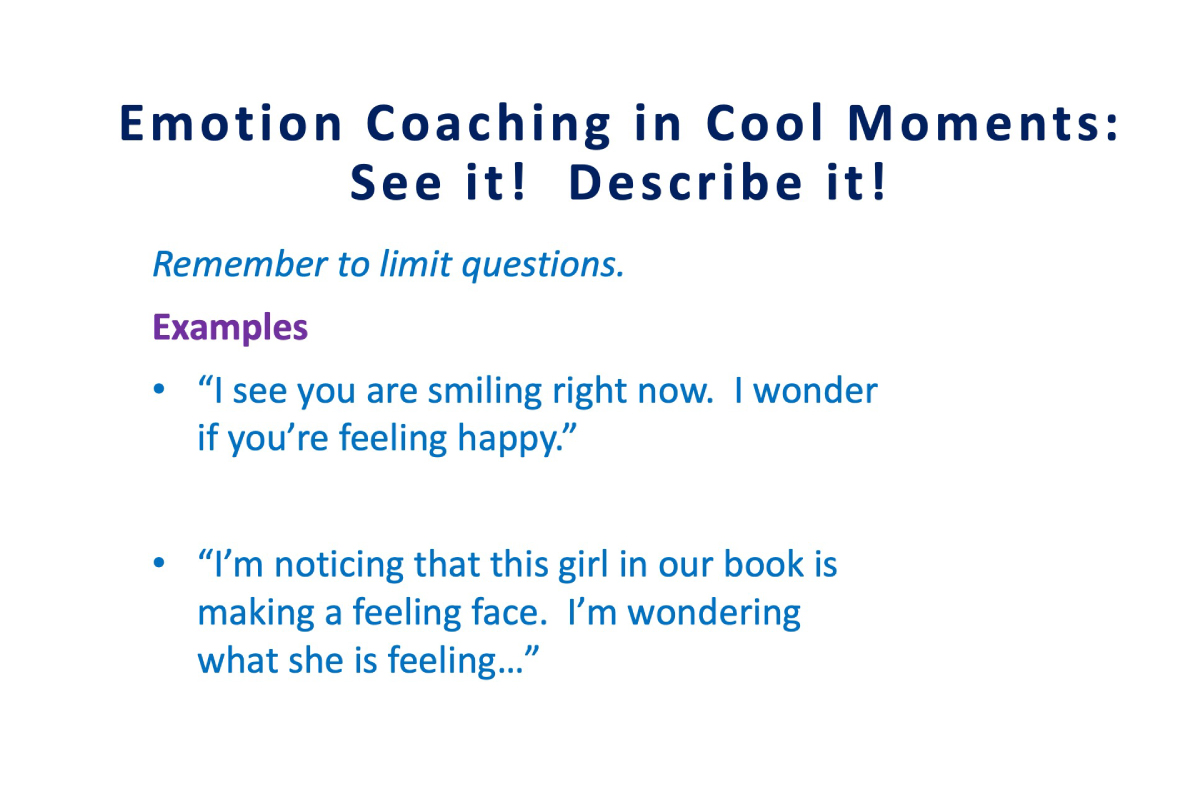
Keep It Simple!
Young children are just learning about the world of emotions. Try focusing on narrations that are short and simple!
Label what the feeling might be. ➡ "It looks like the girl in the book might be feeling happy."
Talk about why the feeling might be coming up. ➡ "I wonder if you might be sad because you fell."
Say out loud how we can cope with our feelings. ➡ "I was worried when I couldn’t find my keys this morning, but I took three deep breaths, and I started to feel better."
Put this in your Toolbox
Young children learn about emotions with the help of nurturing adults. Knowing that we can use intentional observation and narration to build the important school readiness skill of emotion regulation—now that’s a key concept for us to hold in mind.
When you are able to sprinkle the language of emotions into your everyday interactions with young children, you are building their emotion vocabulary and their ability to practice coping strategies.
Remember to:
- Label the emotions you observe in the child, in yourself, or even in books you read together.
- Talk about what might be causing our feelings.
- Say out loud how you cope with your feelings and how they can begin to cope with theirs.
A gentle reminder that children with histories of trauma may not have had the experience of adults talking about their feelings in healthy ways. Be patient and consistent with observing and narrating about emotions. Most children, including children with histories of trauma, will eventually see this practice as predictable and comforting. One day, you might even hear them using the language of emotions in their own play!
Print this SEEDS resource for your classroom or office! Or share it with a parent, caregiver, or colleague who might like the visual reminder!
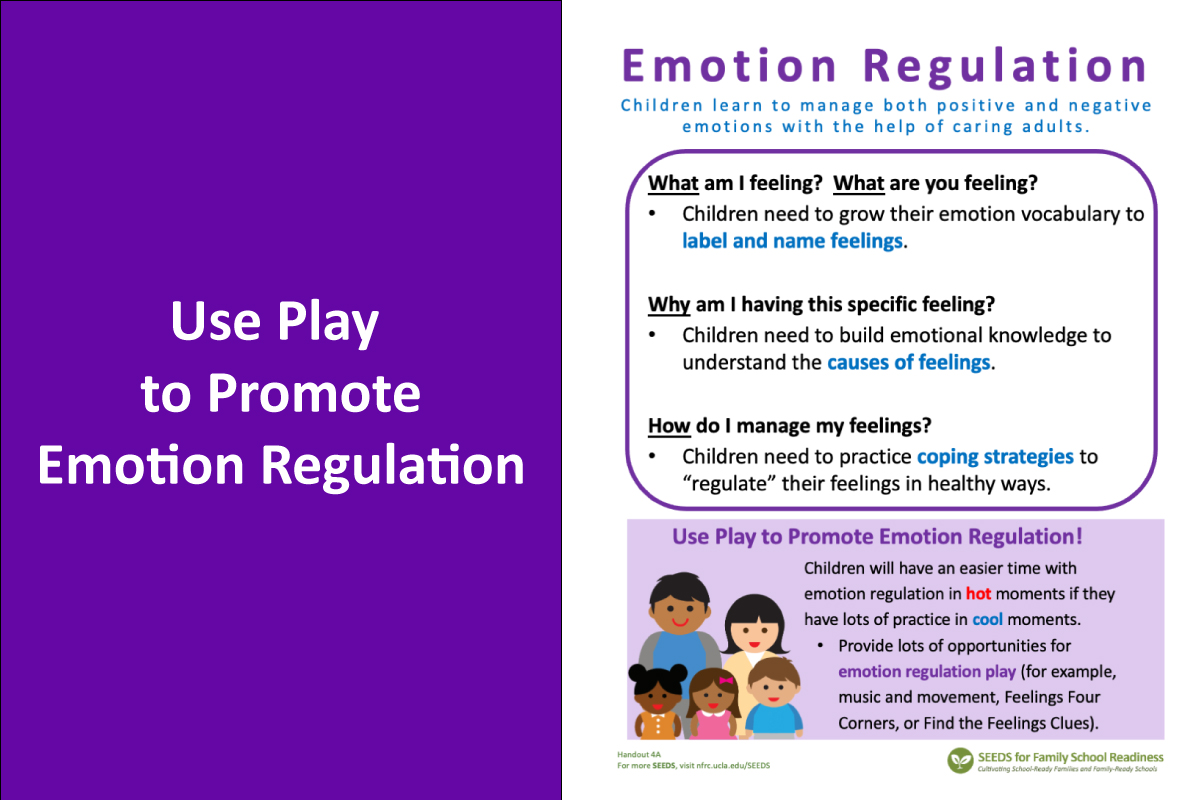
Do you have another 10 minutes? Check out the next article in this series: Promoting Young Children's Executive Functioning Skills in Cool Moments.
